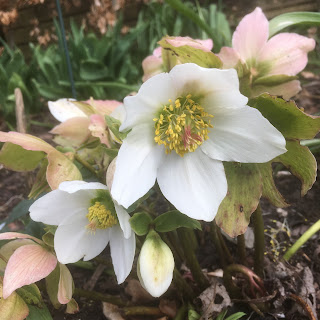I’ve been writing a time-travel story.
Ah! you say. Science fiction.
But is it?
I’d say there’s not so very much distance between the type of world-building I’m doing around time travel in this book and the world-building I did when I was writing about a family of witches.
It’s about creating a system that the reader can believe in.
I did spend some time reading some science about time travel. It’s very complicated and my understanding is totally superficial, but what I gleaned is this: time travel is probably impossible and even if it were possible (which would take unfathomable amounts of energy), you’d only be able to travel into the past and you couldn’t return.
No one has yet settled on one definition of science fiction (or indeed any other genre) but most interested parties agree that the science involved should be a possible development of actual known science and that you can’t ignore established science unless you can work out how to explain it. By these parameters, my book is far from science fiction.
I read a LOT of time travel in preparation for writing this book. There are books which are very sciency; there are books that are not sciency at all; there are books somewhere in between. I love them all. The idea of time travel thrills me.
If I were forced to pigeonhole my book, I’d say it is fantasy. Can I call it science fantasy?
So.
Time-travel world-building turns out to be very complicated.
You need a means of time travel: a machine or a portal. It could be something that’s been created for the purpose (or for another purpose with time travel as a side-effect) – that’s a more sciency sort of time travel. Or it could be some mysterious or magic process – that’s fantasy.
Then there are the rules:
How does time spent in the past or future relate to time in the present? Are they equivalent?
Is it possible to communicate with people from your own time?
Can you change the past? What happens if you do?
If you can’t change the past, how does it feel to be in it?
Can you meet yourself in a different time?
What happens if you die in the past?
Can you bring objects from one time to another?
How does it feel to time travel? What happens to your body?
Is it a secret? Why? Whose secret is it? What will happen if people find out?
In a well-written time travel story, in fact in any well-written story with complex world-building, information and rules are fed into the story at such a pace as not to overwhelm the reader. But writing complex worlds is a different matter. There are so many questions to be answered, so many decisions to be made, and it’s really useful to have the majority of them sorted at a very early stage.
But in the end, you also have to keep in mind that however elaborate and fascinating your world-building is, no matter how key it is to the plot, it’s never going to satisfy your readers without a great human story at the heart of your novel.
My new book, Snippets, is available now.
You can get a copy of Snippets on Amazon or if you’d like a signed copy send me a message on Twitter, Instagram or Facebook.
Go to https://ko-fi.com/clairewatts to read a new Snippets story every month. It’s free, but you can support me with a donation if you like.
You can also find me on my website clairejwatts.com














